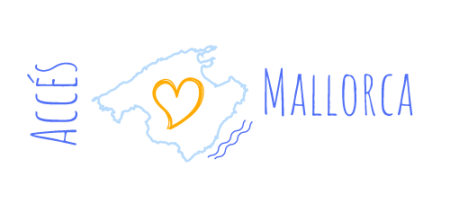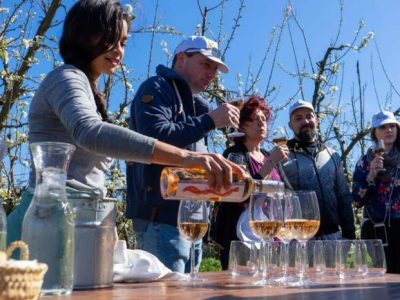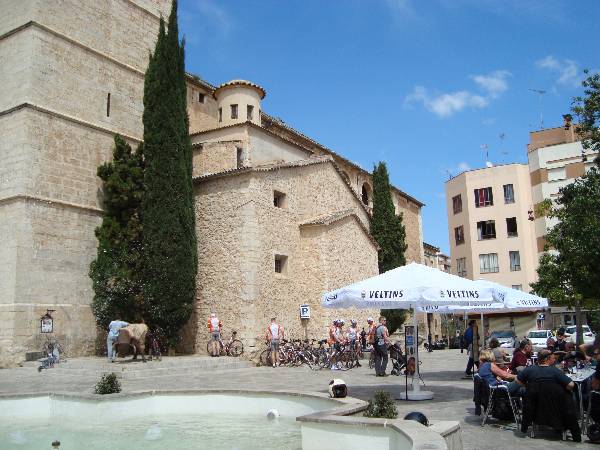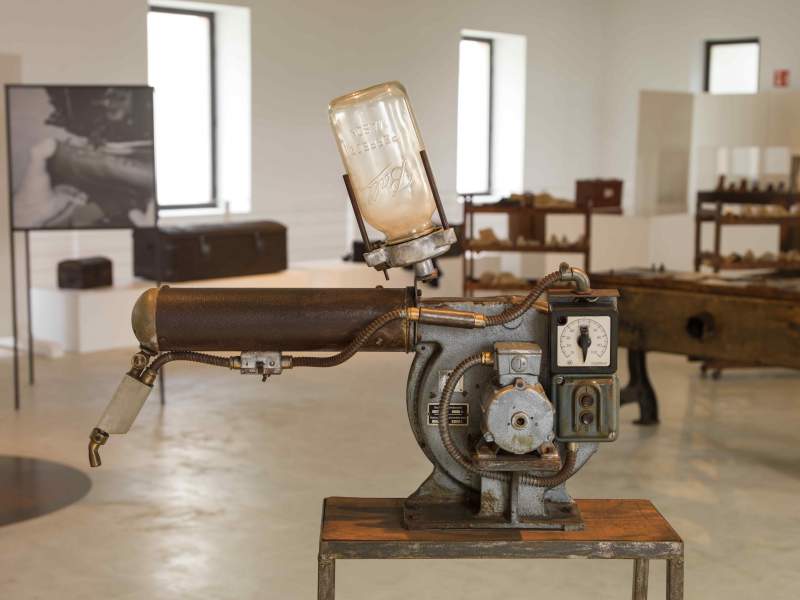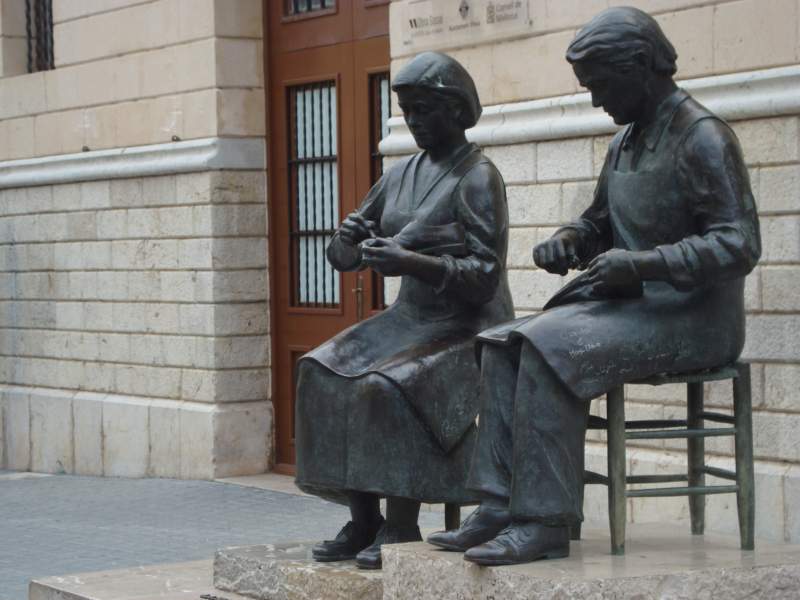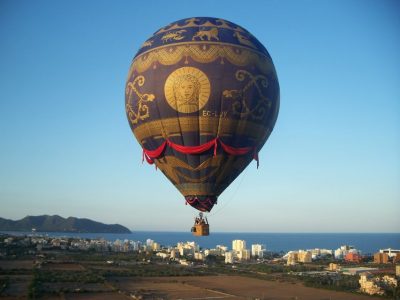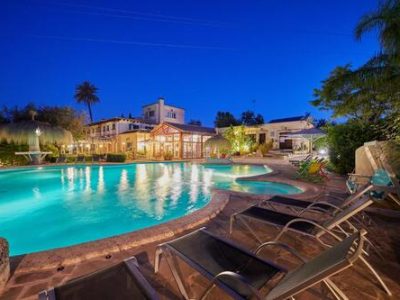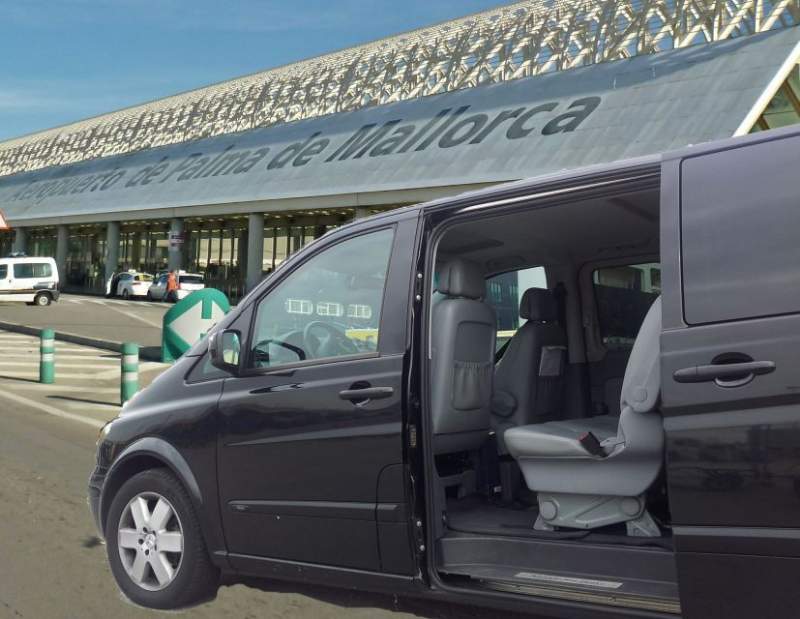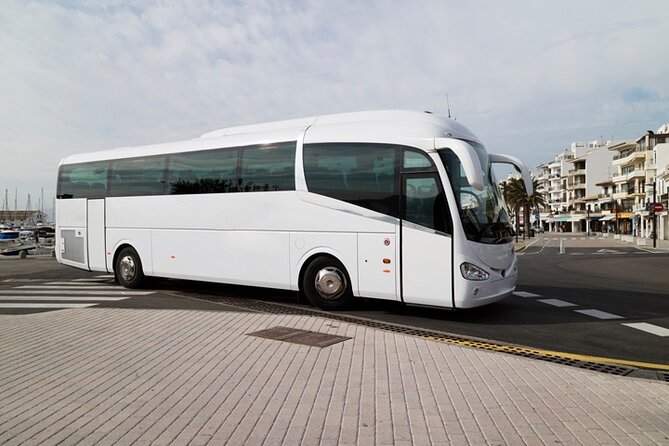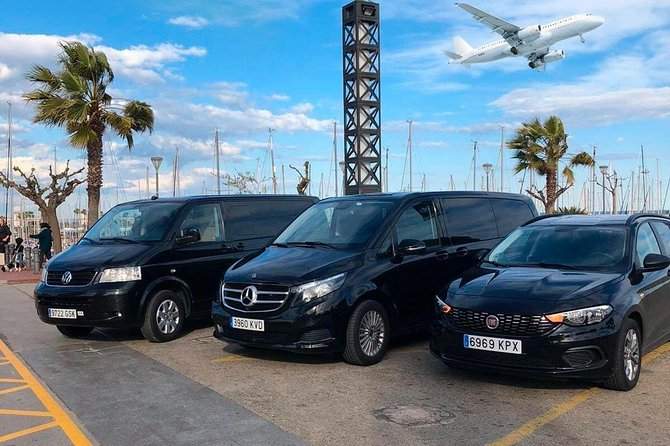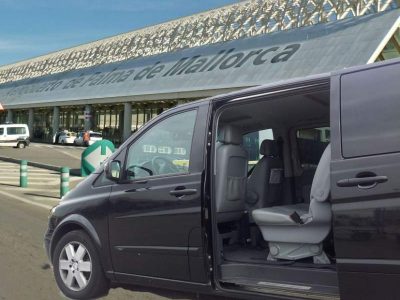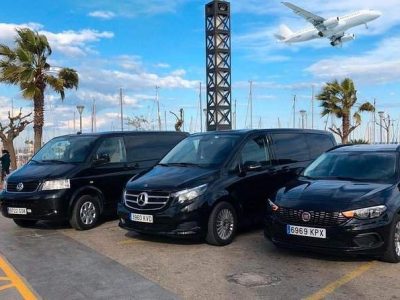All your holiday planning needs in one place, letting you book direct and benefit from official online rates
- Places To Go
- Things To Do
What’s Your Interest?
Traveling with kids
- Blog
Inca, Mallorca - A Guide to Sights and area
Inca is Mallorca’s third largest city. Inca is particularly known for its production of leather, which can be purchased at very advantageous prices in the city’s many outlet stores.
On Thursdays, the weekly market is held in Inca, the biggest of its kind in all of Mallorca.
- This is where I want to go!

What to expect in Inca
Inca is a thriving city, with a lively street life thanks to the many stores and eateries. Some of the islan’s best cellers are found in the heart of Inca; Celler Son Amer and Celler Can Ripoll are both splendid places to enjoy a meal. On Thursdays, when the weekly market is held, the city is overrun by hundreds of thousands of people, eager to make a good bargain on goods.
The areas surrounding Inca city are perfect for sports and other physical activities, such as walking and cycling.
Best things to do in Inca
Inca is a great area for all kinds of activities and things to do. The nice location between the Tramuntana and the plains of the Pla makes Inca a natural playground for cyclists and walkers. There are hundreds of things to explore not just in Inca, but also in the surrounding municipalities that are all easily reachable thanks to the great infrastructure.
ENJOY THE PANORAMIC VIEWS FROM ERMITA DE MAGDALENA
If you are looking for something breathtaking, something that will surely get likes on your Instagram or Facebook profile, go visit the mountaintop hermitage of Magdalena. This old hermitage dates back to the early Middle Ages, and has functioned as convent, school and hermitage. It is situated in a natural area at the summit of the mountain rising outside Inca. Next to the hermitage is a nice restaurant from where you can enjoy the views of Inca while enjoying a lunch or refreshment.
VISIT THE IMPRESSIVE CHURCH OF SANTA MARIA
With its massive tower rising high above the rooftops of Inca, the parish church of Santa Maria de la Mayor is undoubtedly the most remarkable construction in Inca. And just as impressive it is from the outside, just as impressive is it on the inside. Some of the highlights of the visit include the painted panels by artist Joan Daurer dating back from 1373 and the church museum exhibiting numerous religious artworks and treasures made by renown artists, goldsmiths and silversmiths.
VISIT THE MUSEUM OF FOOTWEAR AND INDUSTRY
You may have heard that Inca is known as “The Leather Town”, and there is a reason for this. All the way back to the Middle Ages, production of footwear has been an important industry in Inca and something that is deeply rooted in the identity of the town and its inhabitants. At the museum, you can discover and learn about these rich traditions that has given the town its nickname. Impressive collections of machinery, tools, footwear, photographs and drawings exhibited in the former barrack building, will guide you through hundreds of years of shoe design and production techniques. You will understand why Mallorcan shoes are of the best quality you can get.
RENT A BIKE AND GO CYCLING
Inca is perfectly located in the hearth of Mallorca, close to mountains and country roads. A particularly popular ride is the one to the Santa Magdalena hermitage situated at the summit of the mountain of same name just north of Inca town.
THE MONASTERY OF SANTO DOMINGO
Visit the church and former monastery of Santo Domingo situated in the heart of Inca. The church is built in baroque style, and from the inside you can enjoy the many beautiful artworks such as the main altarpiece and the side chapels. Next to the church you will find the cloister with the garden in the middle. The garden is often used as an exhibition space.
MONESTIR DE SANT BARTOMEU
This baroque style convent and church has been the home of the closed order of Jerónima nuns since 1534. The convent is situated on a hill over Inca, with excellent views of the mountains, and below it, the park of the monks. As the nuns lives in solitude, only parts of the convent is open for visiting. Enjoy the stunning baroque architecture, especially the entrance to the courtyard, along with the amazing views from the hill.
THE OLD MARKETPLACE
Plaça de sa Quatera, is the name of this square in the heart of Inca. At this square you will find two places of interest; the old market building and the statue representing the traditions of shoe making. It is a great place to stop and admire a piece of history.
STROLL IN THE PARK OF THE MONKS

Enjoy a refreshing and scenic stroll in the park of the monks situated in the eastern part of Inca. The park offers more than 70,000 square meters of holm oaks, small lakes and beautiful flowers. There are benches in the park for relaxing and taking in the stunning views. The park is often used by pupils for studying, and there is also held workshops here about gardening. Inside the park you will also find a historical monument, namely “the Kings Paw”. On this very spot of the monument, it is said that king Jaume I’s horse slipped during a chase of a group of Moors and left a mark in the surface of the stone.
VISIT THE CHURCH OF SANT FRANCESC
The church of Sant Fracesc is a baroque building dating back from the early 19th century. Inside the church, you can see some beautiful artworks preserved such as the image of the Virgin of Grace made by famous artist Gabriel Mòger, the Renaissance altarpiece of the Immaculate Conception from the 17th century and the image of the Virgin of Hope also from the 17th century.
IMAGE GALLERY
Enjoy some beautiful pictures from Inca
FAQ
Inca can be visited all year round, it is never closed. There’s always a reason to indulge in a local delicacy, have a meal at one of the best cellers or do some shopping.
The nearest and easiest beaches to reach from Inca are the ones in Port de Pollenca, Port d’Alcúdia and Platja de Muro, all on the northern cape of the island.
Inca is famous for leather and shoe manufacturing, a craftsmanship that goes back to Moorish times on the island.
The market in Inca is held every Thursday.
Yes, Inca is safe to visit. As with any place, you should always keep your personal belongings close to you. On Thursdays, on the market day, be extra attentive.
Events in Inca
Markets & Events
The weekly market in Inca happens every Thursday all year round. The market in Inca is one of the biggest markets on the island, and considered a tourist attraction with coaches bringing in tourists from all over.
With no exaggeration, hundreds of stalls are set up in the streets for you to browse through. You will find products of all sorts here, clothes, leather products, ceramics, fruits, nuts, electronics, oils, herbs, shoes, accessories, jewelry and much more.
At the market you can also sample some local specialties such as sausages like the Mallorcan sobrassada, the camaoit and the morcilla. For the sweet tooth, don’t miss the opportunity to taste the “torró fort d’Inca“, a sweet pastry made of honey, sugar, cinnamon and almonds.
Another local product of Inca, is the “Galleta de Inca” (cookies of Inca), which back in the 17th century were invented as a substitute for bread for sailors to bring on the ships when gone for longer periods of time. These cookies are made of oil, flour, yeast and salt and can be kept in perfect condition for a long time.
The market will quickly get very crowded, so make sure to always carry your personal items in a safe place.
Annual events and happenings
January
Celebration of Antony the Holy
Saint Anthony (Catalan. Sant Antoni) is the patron saint of livestock, and a very important figure, especially in the traditional agricultural districts. The official day of the celebration is January 17, with a parade going through the city, which ends at the parish church where the animals are blessed. The night before, Inca is lit up with bonfires and dancing, where people gather in a festive atmosphere.
Sant Sebastiá
Many cities in Mallorca celebrate Sebastian, including Inca. However, it is not the traditional celebration of a martyr here, but rather a memorial service in honor of the people who did not choose to leave the city in 1652, when a terrible plague ravaged. In the city’s central square, in front of the town hall, there is a huge bonfire, singing and poetry readings. Paciències, a kind of pastry, are also served.
March
Discount Fair
To promote the local trade in Inca, most of the shops in the city gather to make a special offer day with extra large discounts. In the city’s central square, Placa d’Espanya, they set up stalls and take their stock with them.
Inca a Taula
Inca a Taula (Inca on the blackboard) is a kind of food festival where a lot of restaurants and bars come together to promote the gastronomic universe of Inca. It’s no secret that you will find some of the area’s best eateries in Inca, and therefore this event is extra interesting, at least for all of us who love good food.
April
Pancaridad
Pancaridad is celebrated next Sunday after Easter, with a parade of people heading to the Santa Magdalena hermitage outside the town. After arrival, a special service is held, after which there are activities for the whole family, among others. games, races and a traditional paella competition.
Many places in Mallorca have a tradition of taking the excess Easter food with them to pancaridad.
May
Dijous Gros
Dijous Gros is a huge market held in Inca this coming Thursday after the first Sunday in May. The market is primarily of an agricultural and industrial nature, trying to bring people into contact with Mallorca’s other side, which is not related to tourism. Among other things. beans are served to the market, which is an old tradition.
October
The autumn fairs
Three Sundays in a row after Luke’s day (October 18), autumn fairs are held in Inca. At each of the fairs, there are different themes that put you in touch with Mallorca’s traditions. Typically, you can look forward to huge markets, exhibitions, workshops, competitions and lots of entertainment in the form of dance performances and music in the streets.
November
Dijous Bo
The biggest annual event in Inca is Dijous Bo, which is an extra large market that attracts people from near and far. For Dijous Bo, in addition to the market, there is plenty of entertainment, sports tournaments, competitions, games, shows, exhibitions and activities for all ages.
Dijous Bo is usually held on the third Thursday in November, and if you are on the island there, then go to Inca.
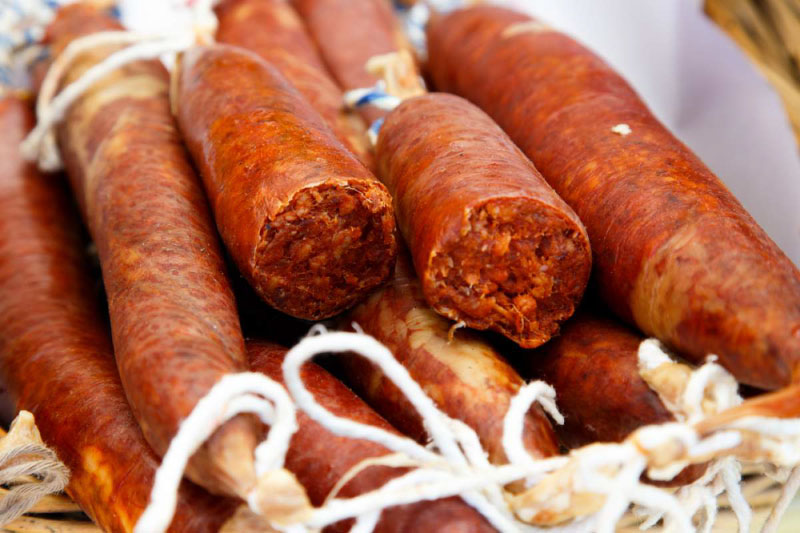
Support Local
Supporting local communities during your travels can have a profound impact. Stock up with groceries locally, stop in an artisan shop or enjoy a refreshment at a restaurant or bar. Now more than ever, these small businesses need support from travelers near and far.
Get to know Inca
A bit of history of Inca
Excavations and founds suggests that the area of Inca has been inhabited by humans for more than 3,000 years.
After the Roman army conquered Mallorca 123 BC, they established two cities; Pollen-tia (Alcúdia) and Palmera (Palma). Areas where the towns of Consell, Binissalem and Inca are now found, was used as places for resting when they traveled between the two cities.
We know very little of the time after the Romans left Mallorca and when the Moors inhabited the island from around 902. What we do know, however, is that at the time of the Catalan conquest (1229 – 1235) Inca had the second largest population on the island. At the time, the village was known as Inkan.
It was originally the Moors that started making footwear, only they made them in the capital of Medina Mayorque (Palma). However, the new settlers continued this workmanship, and so, already in 1240 the first leathersmith of Inca was documented.
Up until the 16th century, leather and footwear production was the main source of income. Unfortunately, tough competition from other countries started to threaten many leathersmiths in Mallorca and many had to shut down their businesses. Instead of leather, a lot of shoe makers made so called tapins, a simple shoe made of cork sole and cheap fabric.
To make matters worse, in 1652 a brutal epidemic of bubonic plague stroke and killed more than 2,000 people in Inca in just a few months. The plague left the town stunned for the next 200 years, which also killed most of the shoe making industry.
In the 19th century, the footwear industry flourished again along with the rest of the industry in Inca. Today, Inca is the third largest city in Mallorca with a population of more than 30,000 inhabitants. The main industry is still leather products and retail.
Practical Info
Useful Numbers
Emergency: 112
National police: 091
Local police: 092
Guarda civil: 062
Fire: 080
Maritime emergencies: 900 202 202
Tourist Office: +34 871 914 000
Public Transport
Bus lines: 301, 302, 304, 311, 312, 314, 315, 316, A32
Train lines: T1
Power Supply
220V
